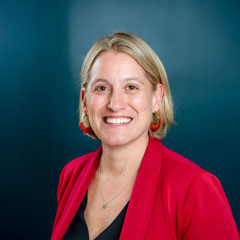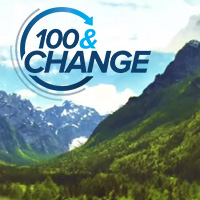Over the past several weeks, MacArthur has hosted the eight 100&Change semi-finalists at our Chicago offices. These visits were focused on learning about their proposals and starting conversations on how we hope to support the growth of their work over the coming months.
From the perspective of a program officer, there was a great amount of excitement in meeting each team. It was driven by the desire to find out how each organization approaches its work and deals with challenges associated with complex problems. What you learn from a written proposal only scratches the surface of the depth and breadth of what you discover when you engage with a team in person.
So, what have we learned from our visits? There are elements of every proposed solution that show the massive scope of the problem that each organization is working to solve. View slides from semifinalists' presentations below.
These facts provide a framework for understanding why we should care about an organization’s proposed solution. But, what is critical from a programmatic point of view is how an organization plans to solve an intractable and systemic problem.
Here are some examples of challenges faced by semi-finalists and how they are already creatively overcoming obstacles to successfully expand, adapt, and sustain their projects in a geographic space, over time, to reach a greater number of people:
- HarvestPlus produces biofortified vegetables that frequently are more orange/yellow in color than consumers are accustomed. This change in color can cause resistance to consumer adoption. In an effort to encourage consumption of biofortified vegetables, HarvestPlus has deployed a set of creative and socially relevant tactics to promote the benefits of these fortified crops. One example is pairing with top Nollywood directors to make The Yellow Cassava, a film about the benefits of eating these unusual looking vegetables.
- Rice 360° Institute for Global Health is focused on developing and deploying cost-effective machines designed to ensure a baby born in Africa has the same chance of survival as a baby born in the United States. The technology it has developed is made with simple circuitry that can be easily repaired with locally available materials. While the cost-effectiveness of building machines is critical, it is equally important to consider costs when it comes to distributing the product. Rice is engaging with a variety of partners, including Kellogg School of Management at Northwestern University, to bundle technologies to reduce distribution costs.
- Sesame Workshop and International Rescue Committee are leveraging their comparable strengths to provide socio-emotional support to young people who are living through humanitarian crises. For example, creating content that shows Elmo living in a tent with his family after losing his home and sharing with children how that experience makes him feel. Because many displaced children live in local communities and go to school with classmates born in the host country, Sesame and IRC also are focusing on how to help foster understanding, emotional support, and empathy between host countries and displaced populations.
These organizations provide a small glimpse into the creativity, partnerships, thoughtfulness, and learning that all the semi-finalists are using to strengthen their proposals.
Over the next five months, all of the teams will be tackling similar issues focused on how they best leverage partnerships and engage with communities of interest to scale their interventions. It is with great excitement that we are embarking on this journey. We look forward to learning alongside these thoughtful teams as they think through the challenges of solving some of today’s most pressing humanitarian challenges.




